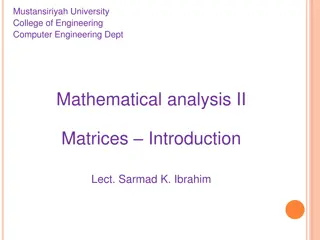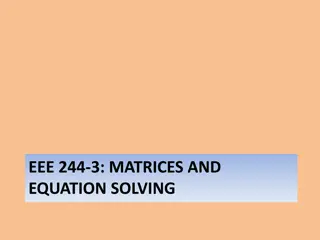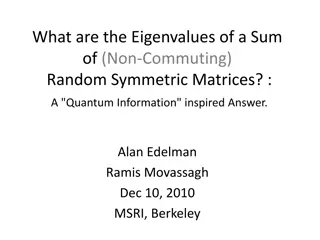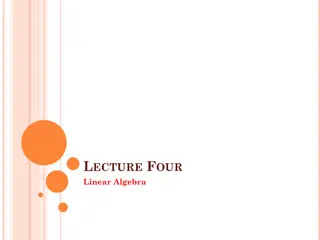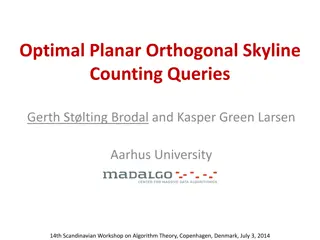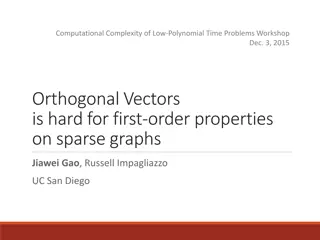
Understanding Orthogonal and Unitary Matrices
Learn about orthogonal and unitary matrices, their definitions, properties, and a problem-solving example. Discover how to determine if a matrix is singular based on the determinants of orthogonal matrices. Explore the concepts with informative images and explanations.
Download Presentation

Please find below an Image/Link to download the presentation.
The content on the website is provided AS IS for your information and personal use only. It may not be sold, licensed, or shared on other websites without obtaining consent from the author. If you encounter any issues during the download, it is possible that the publisher has removed the file from their server.
You are allowed to download the files provided on this website for personal or commercial use, subject to the condition that they are used lawfully. All files are the property of their respective owners.
The content on the website is provided AS IS for your information and personal use only. It may not be sold, licensed, or shared on other websites without obtaining consent from the author.
E N D
Presentation Transcript
Definition A real n n matrix A is said to be orthogonal if AAt=In. A complex n n matrix A is said to be unitary if AA0=In.
Examples 2/3 1/ 2 1/3 2 1/3 0 2/3 1/ 2 1/3 2 is a orthogonal matrix. ? = 4/3 2 A=(1 + ?)/2 (1 ?)/2 (1 ?)/2 (1 + ?)/2is a unitary matrix.
Properties of orthogonal matrix 1.If A be an orthogonal matrix then A-1=At. 2.If A and B be orthogonal matrices of the same order then AB is orthogonal. 3.If A be an orthogonal matrix ,then A-1is orthogonal.
Properties of Unitary matrix If A be a unitary matrix then A is non singular and modulus of det A=1 If A be a unitary matrix then A-1=A0
Problem Q. A and B are real orthogonal matrices of the same order and detA +detB=0.Show that A+B is a singular matrix. Solution-we have detA=-detB, AAt=In,BBt=In. det(A+B)=det A(In+AtB)=detA(Bt+At)B=-det(A+B)t=-det(A+B) i.e det(A+B)=0 Hence A+B is singular matrix .







